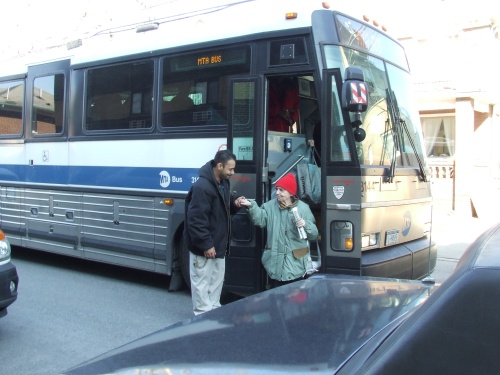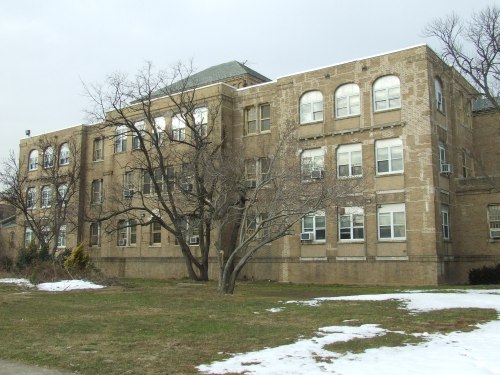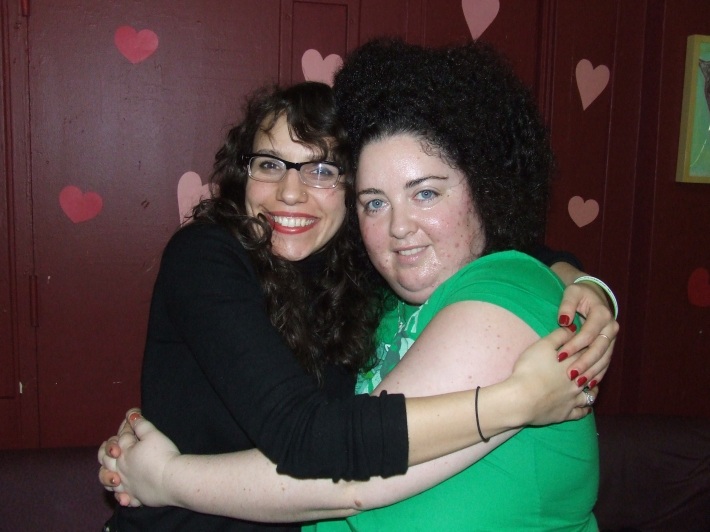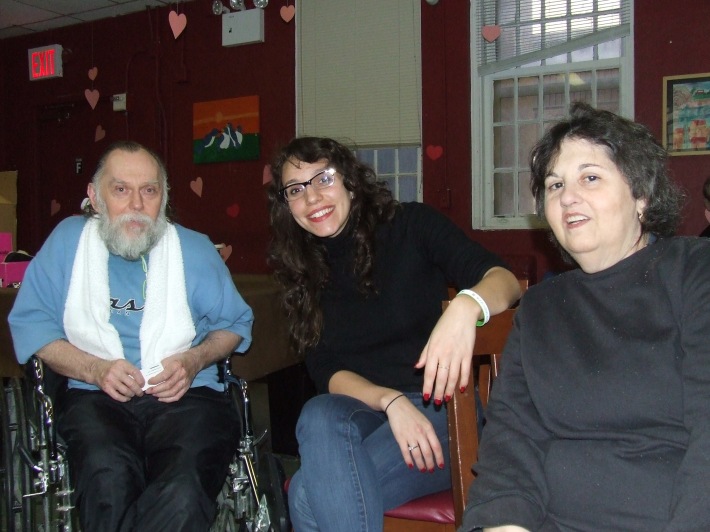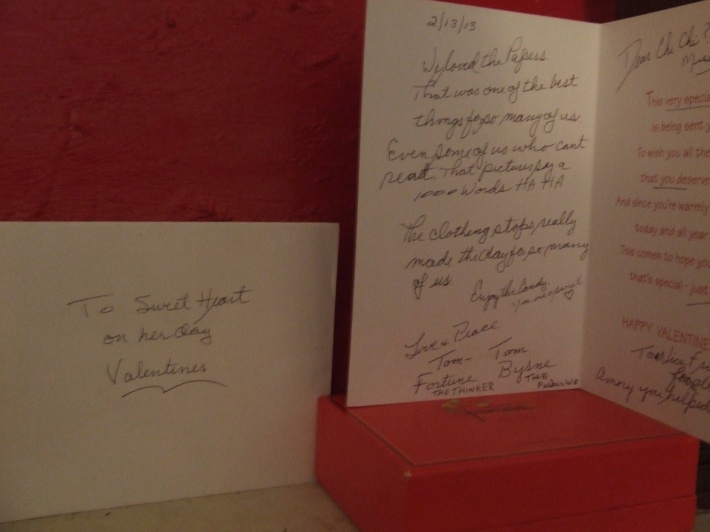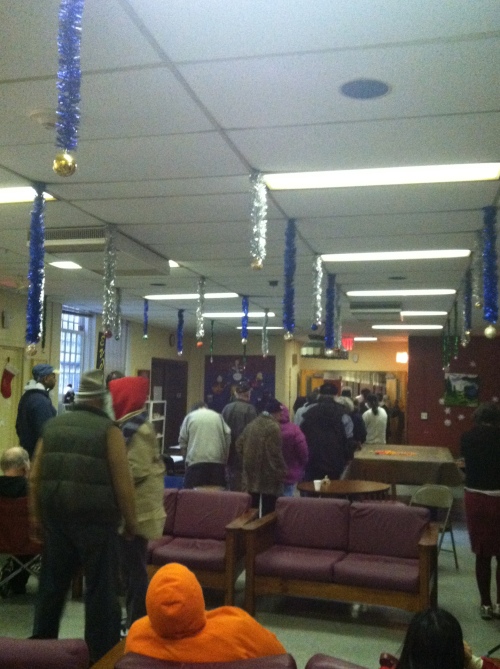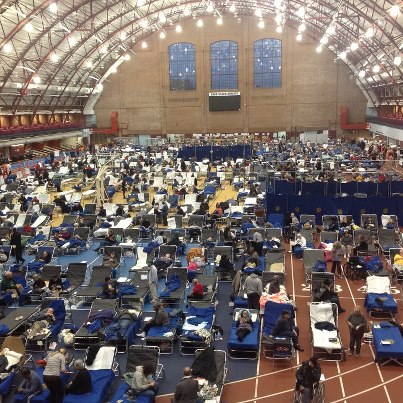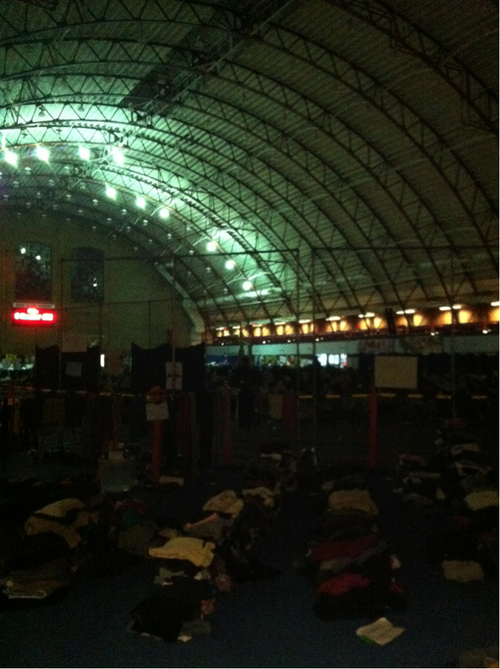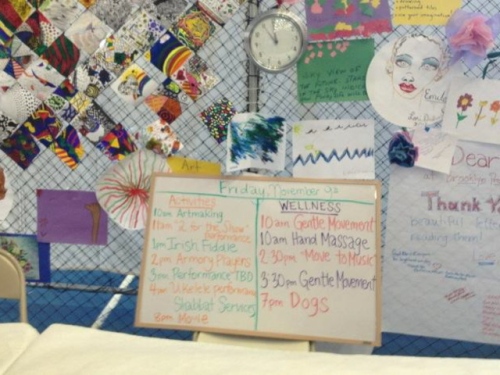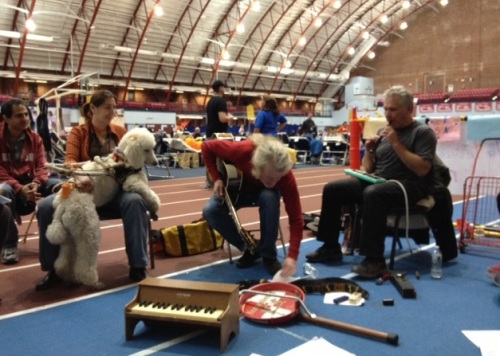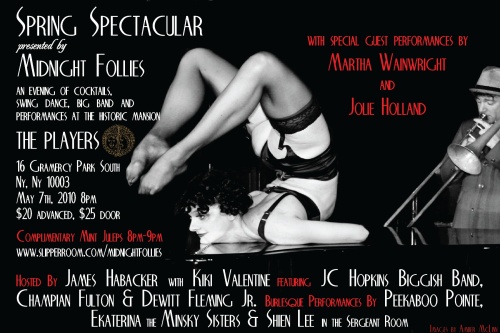December 27th, 2012
ASSOCIATED PRESS, NEW YORK – Hundreds of elderly and disabled New Yorkers who were hurriedly evacuated from seaside nursing homes and assisted living residences after Superstorm Sandy are still in a grim limbo two months later, sleeping on cots in temporary quarters without such comforts as private bathrooms or even regular changes of clothes.
Their plight can be seen at places like the Bishop Henry B. Hucles Episcopal Rehabilitation and Skilled Nursing Center in Brooklyn, which was full before the refugees arrived and is now swollen to nearly double its licensed capacity.
For eight weeks, close to 190 patients forced out of the flooded Rockaway Care Center in Queens have been shoehorned into every available space at the 240-bed Bishop Hucles.
Most still didn’t have beds last week. Instead, they bunked on rows of narrow, increasingly filthy Red Cross cots in rooms previously used for physical therapy or community activities. More than a dozen slept nightly in the nursing home’s tiny chapel.
Amid the overcrowding, a 69-year-old patient left the home unnoticed at 7:30 p.m. on Dec. 14, slipping past security measures intended to keep residents with dementia from wandering off. The facility didn’t alert police until 5:18 a.m. She wandered for two days before turning up unhurt at a hospital in another part of Brooklyn, police said.
“It feels like a MASH unit here right now,” said a staff member who spoke on condition of anonymity for fear of retribution. “People are working incredibly hard. The circumstance could not be more dire, and people are getting the best possible care we can manage.”
In Queens, many of the roughly 160 residents evacuated from the Belle Harbor Manor assisted living facility were recently moved from a hotel to a halfway house on the grounds of the Creedmoor Psychiatric Center, a partly abandoned mental hospital.
Many Belle Harbor residents have been diagnosed with mild psychiatric disorders, but several complained that at the halfway house, called the Milestone Residence, they have been mixed in with more severely ill patients who were living there already.
Those in the halfway house cannot have visitors in their rooms. Residents have complained about things being stolen and people banging on their doors late at night.
“It was nothing but a shock when we found out we were coming here,” said Belle Harbor resident Alex Woods, 57. He said that the staff has been kindly, but that adjusting to an institutional lifestyle has been tough.
“It’s an infringement on your freedoms,” he said, adding that he constantly felt “on edge.”
Moments later, an administrator interrupted Woods’ interview with The Associated Press and ejected a reporter from the grounds. She said residents could not meet with a reporter there without permission from the organization that manages the facility.
More than 6,200 residents and patients were evacuated from 47 nursing and adult care homes as a result of the Oct. 29 storm, according to New York state’s Health Department.
Two thirds of those patients left after Sandy had already struck, meaning many were hustled out of flooded, muck-filled buildings in such a hurry that they were unable to bring belongings or clothing. Some left without identification.
At least six nursing homes and six adult care homes in New York City and Long Island remained closed as of Friday because of storm damage, according to state health officials. Seven other nursing homes had accepted some patients back, but not all.
The Health Department was unable to provide the AP with a total number of people still displaced, but said it had sent 500 adult home residents to four temporary facilities, including the Milestone Residence.
“These operators, in concert with the state Department of Health, ensured and continue to ensure that residents’ safety and care needs continue to be met,” department spokesman Bill Schwarz said in an email.
He said the state had recently provided money to buy beds for the displaced Belle Harbor residents.
A shipment of beds also arrived at Bishop Hucles last week. The nursing home is owned by Episcopal Health Services Inc. but is being sold to an ownership group that includes the operator of the Rockaway Care Center.
Episcopal Health spokeswoman Penny Chin said staff members from Rockaway Care had followed their patients to Bishop Hucles, and administrators believe there are enough personnel to care for patients safely.
“Is it ideal? Well, no,” she said. She said patients should be able to return to the Rockaway Care Center in a matter of weeks.
Chin said she was aware that a patient had wandered off, but did not know the details.
Asked whether any effort had been made to transfer patients in a less-crowded facility, Chin said she wasn’t sure, but noted that medical centers throughout the city are bulging.
St. John’s Episcopal Hospital, the health system’s flagship facility, had itself taken on 200 evacuated nursing home patients after the storm _ an outsized number for a hospital with 257 beds.
Rockaway Care’s administrator, Michael Melnicke, who owns several nursing homes in New York City, did not respond to messages.
New York state’s long-term care ombudsman, Mark Miller, said his office was attempting to get inspectors out to facilities dealing with evacuees.
He said his office already had some concerns about how the evacuations were handled. Initially, he said, operators of some facilities were unreachable, leaving the families of displaced residents in the dark about where relatives had been taken.
It was unclear when residents might be able to return to Belle Harbor Manor, which flooded with several feet of water.
Few if any residents have been able to fetch their possessions since they were rushed out without notice the day after the flood. Some are still spending most days in the clothes they had on when they left, and have to rely on donations from volunteers for changes of socks and underwear. Others have been unable to receive mail.
Rabbi Samuel Aschkenazi, president of the nonprofit company that runs Belle Harbor Manor, told an AP reporter he had been ill and didn’t know what was happening to evacuated residents. He referred questions to another board member, who did not return a phone message.
Belle Harbor Manor resident Miriam Eisenstein-Drachler, a retired teacher in her early 90s, said that after spending three weeks in an emergency shelter inside a former armory, residents were sent to a hotel in Brooklyn’s crime-plagued East New York section, where they were advised not to go outside because of safety concerns.
After weeks of sleeping three to a room, they were informed they would be moving again, to the grounds of the mental hospital.
“The people here are kind. But there is a tone of strictness,” said Eisenstein-Drachler, who holds a Ph.D. from Columbia University. “I consider myself a mentally healthy person. What am I doing here?”
Constance Brown, a spokeswoman for the Institute for Community Living, the organization that manages Milestone, said that before the storm, the company had been shutting down Milestone and transferring its residents to apartments as part of a shift away from institutional living.
But Brown defended the site as a temporary home for the evacuees, saying they should be back in their former home by mid-January.
“CL Milestone and Belle Harbor Adult Home have residents with similar diagnosis, therefore it is not an inappropriate placement as staff is familiar and trained to deal with this population,” she said in an email.
Geoff Lieberman, executive director of the Coalition of Institutionalized Aged and Disabled, an advocacy group, said finding facilities to accept displaced people in a disaster is a challenge.
“There is no one adult home that has anywhere near the capacity that you really need to safely and comfortably accept 100 or 200 other residents,” he said.
Lieberman said some have wound up in better settings than others. Residents of the Park Inn Home, a 181-bed residence in Rockaway Park, were transferred to a retreat house in the Riverdale section of the Bronx, on a site overlooking the Hudson River.
“It’s beautiful,” he said. “People are still sleeping in cots. And that’s been hard for everybody. But the food has been good, and I think aside from the fact that they don’t have a bed to sleep on, they have been comfortable.”
– David Caruso








